#xjr-12
Explore tagged Tumblr posts
Text

1991 24 Hours of Le Mans
#le mans#le mans 1991#mazda 787b#jaguar xjr-12 lm#mercedes benz c11#787b#xjr-12#c11#sauber mercedes#renown#silk cut#1991#circuit de la sarthe#gif#my edit
11 notes
·
View notes
Video
Jaguar XJR 12 / Ivan Vercoutere / Alex Müller by Artes Max Via Flickr: ESPÍRITU DE MONTJUÏCH 2019 / Circuit de Barcelona
#Jaguar#XJR#12#Ivan#Vercoutere#Alex#Müller#ESPÍRITU#DE#MONTJUÏCH#2019#Circuit#Barcelona#clásico#histórico#classic#historic#racecar#coche#car#sports#racing#race#motor#motorsport#autosport#legends#nikon#retro#السيارات
2 notes
·
View notes
Text

Davy Jones, Jan Lammers, & Andy Wallace - (Castrol - Jaguar XJR-12 D #TWR-J12C-388) les vainqueurs des 24 Heures de Daytona 1990. - source Carros e Pilotos.
33 notes
·
View notes
Photo
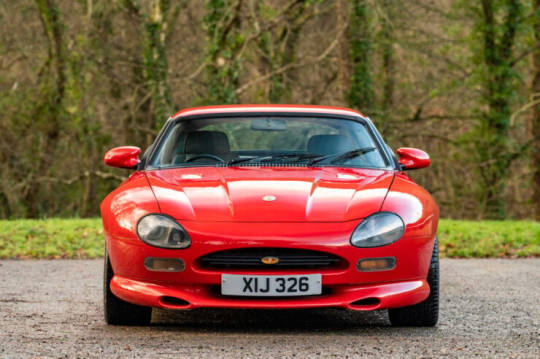


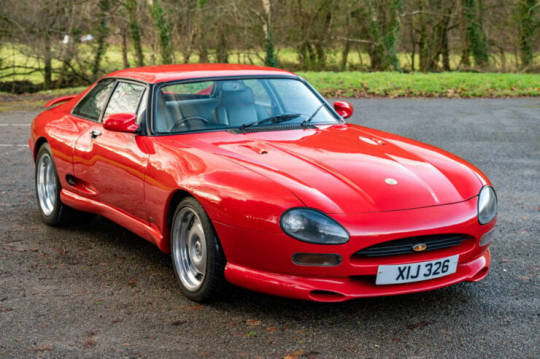

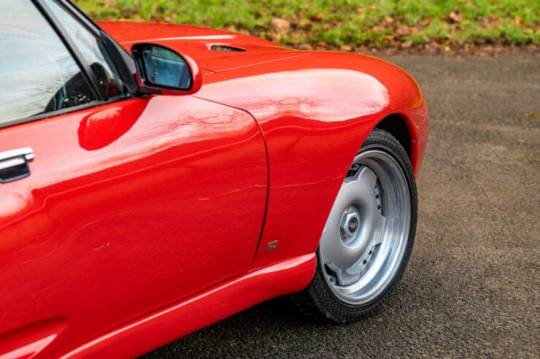
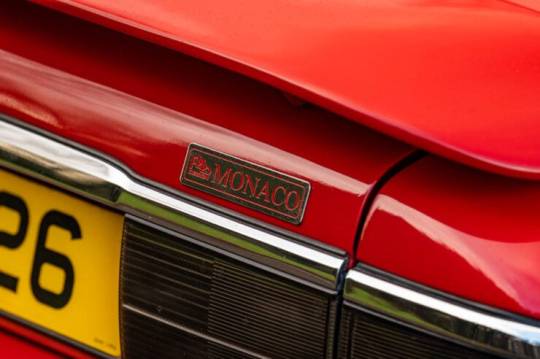


Jaguar XJR-S V12 “Monaco” (by PBB Desing).
This is the Jaguar XJR-S V12 “Monaco” by the team at PBB Design based out of Bristol in England. It’s believed that just 12 of them were made – today they remain a rare and highly desirable version of the high-performance XJS. The Jaguar XJR-S was released in 1988 as the new top-of-the-line version of the XJS from Jaguar. It was fitted with the HE V12 engine that had been developed by JaguarSport, an entity owned 50/50 by Jaguar and TWR Group (Tom Walkinshaw Racing).The XJR-S was fitted with a widebody kit, uprated suspension and brakes, wider wheels and tires, and upgraded interiors, however most people’s attention was focused on what was under the hood. The JaguarSport HE V12 incorporated a slew of improvements over the stock engine and produced 318 bhp as a result.In late 1989 the engine was further upgraded and the displacement increased from 5,344 cc to 5,993 cc (6.0 liters). It was fitted with a Zytek fuel-injection and engine management system, a modified air intake system, a forged steel crankshaft, forged alloy pistons, and it had a compression ratio of 11.0:1.This newer V12 was capable of 328 bhp at 5,250 rpm and 365 lb ft of torque at 3,650 rpm, putting it up near the top of the class in the luxury sporting GT genre in the early 1990s.
PBB Design was founded by Paul Bailey in Bristol, England. Bailey had formerly worked in the aerospace industry before moving to Bristol-based Glenfrome Engineering, a company that build special versions of the Range Rover including longer wheelbase versions and a futuristic version called the Facet. In the 1980s Glenfrome experimented with a long wheelbase version of the XJS, this is where Bailey had worked on the car for the first time, and where the kernel of the idea that would become the Monaco would form.
Bailey drew his own plans for the XJS, being very careful to keep his design drawings true to the exact scale of the Jaguar so that they could realistically be applied to the car.
Glenfrome would be dissolved in 1986 however Bailey knew he was onto something with his new design for the XJS, so he formed PBB Design (Paul Bailey Bristol) in 1987 and set to work. He originally looked into creating new steel body panels for the Monaco but eventually settled on fiberglass due to the low weight.
The original body needed to be significantly modified with the front and rear wheel arches cut back allowing for wider wheels and tires, and the headlight section needed to be cut away.
The fiberglass panels, or body kit, was then bonded over the top – the result was a much wider car that looked more like the earlier D-Type and E-Type family than the XJS ever did. A set of 17 inch Compomotive split rims were then fitted along with suitably wide high-performance rubber, the suspension was rebuilt, the brakes were uprated, and clients had a choice of interior upgrades.
Under the hood the original XJR-S engine was considered amply powerful by some, those who wanted more power could opt for one of the fire-breathing Rob Beere Engineering-developed 7.3 liter version of the Jaguar V12.
Due to the high cost just 12 examples of the PBB Design Monaco were ever made, one of which was ordered by the Sultan of Brunei, and they attracted much attention from Jaguar circles when they rarely come up for public sale.
35 notes
·
View notes
Text
First Prototype For Sale: The PBB Design Jaguar XJR-S V12 "Monaco"
This is the Jaguar XJR-S V12 “Monaco” by the team at PBB Design based out of Bristol in England. It’s believed that just 12 of them were made – today they remain a rare and highly desirable version of the high-performance XJS. The styling of the Jaguar XJS has always been a little controversial, it did have the unfortunate job of trying to replace the Jaguar E-Type which is considered by many to…
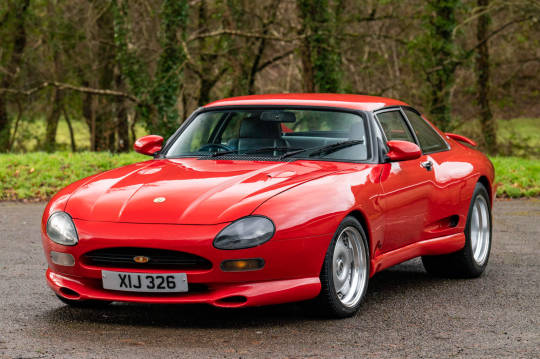
View On WordPress
2 notes
·
View notes
Text
Tom Walkingshaw Racing riporta in vita la Jaguar XJ-S

La nuova Jaguar XJ-S ha mantenuto le linee degli anni 80 aggiungendo un bel po' di tecnologia e design moderni. Richiama la storia Il design della Supercat trae ispirazione dalla XJR-9, dalla XJR-15 e dalla XJ220. Il noto collezionista di auto e stilista britannico Magnus Walker è stato consulente per il design, aggiungendo il suo tocco insieme al designer principale Khyzyl Saleem per dare vita al Supercat. La classica gran turismo ha una carrozzeria in fibra di carbonio, un processo di sviluppo che secondo TWR ha richiesto "decine di migliaia di ore" per essere completato. Un massiccio splitter domina la nuova fascia inferiore, mentre il cofano presenta una grande zona centrale e delle feritoie. Infine, nel posteriore spiccano uno spoiler a coda d'anatra e un diffusore ereditato dalle auto da corsa. A completare il look, ci sono i terminali di scarico laterali. Non sono ancora disponibili dettagli come la larghezza e il peso, ma TWR promette miglioramenti importante, anche - in termini di aerodinamica - rispetto alla XJS originale. Il 12 cilindri Il motore V12 è un altro elemento chiave della trasformazione di questa Jaguar. Non è ancora chiaro se si stato utilizzato il 5,3 litri originale o se i meccanici abbiano installato un propulsore più recente, così come non sappiamo il numero esatto dei cavalli erogati. TWR ha svelato solo che il 12 cilindri è dotato di un compressore volumetrico ed è abbinato a un cambio manuale a sei rapporti. Nel corso dell'anno saranno svelate ulteriori informazioni, anche riguardo agli interni e alle possibilità di personalizzazione. TWR prevede la produzione di sole 88 Supercat, in omaggio alla vittoria della XJR-9 a LeMans nel 1988. E con un prezzo di partenza di circa 225.000 sterline (263.000 euro al cambio attuale) non saranno certo economiche. Read the full article
0 notes
Text
The Performance and Features of Different Jaguar XJ Engine Models

The Jaguar XJ is a luxury sedan that has been in production since 1968. The XJ has undergone several generations and facelifts, each with different engine options and features. We will compare the performance and features of some of the most popular Jaguar XJ engine models, from the classic V12 to the modern V6 diesel.
The V12 Engine: The Ultimate Powerhouse
The V12 engine was introduced in the Jaguar XJ in 1972, and it was the first mass-produced 12-cylinder engine in the world. The V12 engine had a displacement of 5.3 liters and produced 272 horsepower and 394 Nm of torque. The V12 engine gave the XJ a top speed of 225 km/h and a 0-100 km/h acceleration time of 7.4 seconds. The V12 engine was also known for its smoothness and refinement, as well as its distinctive sound. The V12 engine was available in the XJ until 1992, when it was replaced by the V8 engine. The V12 engine was also offered in different variants, such as the fuel-injected HE (High Efficiency) version, which improved fuel economy and reduced emissions, and the XJR-S version, which increased power to 318 horsepower and 461 Nm of torque.
The V8 Engine: The Modern Classic
The V8 engine replaced the V12 engine in the Jaguar XJ in 1994, and it was based on the Ford Modular engine family. The V8 engine had a displacement of 4.0 liters and produced 290 horsepower and 393 Nm of torque. The V8 engine improved the performance and efficiency of the XJ, as well as reduced its weight and complexity. The V8 engine gave the XJ a top speed of 241 km/h and a 0-100 km/h acceleration time of 6.6 seconds. The V8 engine was available in the XJ until 2009, when it was replaced by the V6 engine. The V8 engine was also offered in different variants, such as the supercharged R version, which increased power to 370 horsepower and 525 Nm of torque, and the XJR-100 version, which increased power to 400 horsepower and 541 Nm of torque.
The V6 Engine: The Efficient Performer
The V6 engine replaced the V8 engine in the Jaguar XJ in 2009, and it was based on the Ford Duratec engine family. The V6 engine had a displacement of 3.0 liters and produced 240 horsepower and 300 Nm of torque. The V6 engine improved the fuel economy and emissions of the XJ, as well as maintained its performance and smoothness. The V6 engine gave the XJ a top speed of 240 km/h and a 0-100 km/h acceleration time of 7.5 seconds. The V6 engine is still available in the current generation of the XJ, which was launched in 2010. The V6 engine is also offered in different variants, such as the supercharged S version, which increased power to 340 horsepower and 450 Nm of torque, and the diesel version, which increased power to 275 horsepower and 600 Nm of torque. More information about the range rover engine visit us here at https://www.rangeroverengine.co.uk/ .
The Diesel Engine: The Eco-Friendly Choice
The diesel engine was introduced in the Jaguar XJ in 2005, and it was based on the Ford Lion engine family. The diesel engine had a displacement of 2.7 liters and produced 207 horsepower and 435 Nm of torque. The diesel engine improved the fuel economy and emissions of the XJ, as well as provided ample power and torque. The diesel engine gave the XJ a top speed of 225 km/h and a 0-100 km/h acceleration time of 8.2 seconds. The diesel engine is still available in the current generation of the XJ, which was launched in 2010. The diesel engine is also offered in different variants, such as the twin-turbocharged version, which increased power to 300 horsepower and 700 Nm of torque.
The Hybrid Engine: The Future of Mobility
The hybrid engine is expected to be introduced in the next generation of the Jaguar XJ, which is scheduled to be launched in 2021. The hybrid engine will combine an electric motor with a gasoline or diesel engine, depending on the market. The hybrid engine will improve the fuel economy and emissions of the XJ, as well as provide instant power and torque. The hybrid engine will also enable the XJ to run on electric mode only for short distances, reducing noise and pollution. The hybrid engine is expected to give the XJ a top speed of over 250 km/h and a 0-100 km/h acceleration time of under 6 seconds. The hybrid engine is also expected to offer different driving modes, such as eco, sport, and comfort, to suit the driver's preferences and needs.
The Features of the Jaguar XJ Engine Models
The Jaguar XJ engine models are not only distinguished by their performance, but also by their features. The features of the Jaguar XJ engine models include: The ZF automatic transmission, which provides smooth and responsive shifting, as well as adaptive and sport modes. The Adaptive Dynamics system, which monitors the vehicle's speed, steering, and suspension, and adjusts them accordingly to optimize the ride and handling. The Active Differential Control, which distributes the torque between the rear wheels to enhance traction and stability. The Intelligent Stop/Start system, which shuts off the engine when the vehicle is stationary, and restarts it when the driver releases the brake pedal, to save fuel and reduce emissions. The Electric Power Assisted Steering, which reduces the steering effort and improves the feedback and precision. The Drive Control system, which allows the driver to select from different driving modes, such as normal, dynamic, winter, and eco, to suit the road conditions and driving style.
The Benefits of the Jaguar XJ Engine Models
The Jaguar XJ engine models offer many benefits to the drivers and passengers, such as: The power and performance, which deliver exhilarating acceleration and speed, as well as smooth and refined cruising. The efficiency and economy, which reduce the fuel consumption and emissions, as well as lower the running costs and environmental impact. The reliability and durability, which ensure the longevity and quality of the engine, as well as minimize the maintenance and repair needs. The comfort and convenience, which provide a quiet and comfortable ride, as well as easy and intuitive operation. The safety and security, which protect the occupants from collisions and thefts, as well as assist the driver in avoiding or mitigating hazards.
Conclusion
The Jaguar XJ engine models are impressive in every aspect. They offer a range of options to suit different preferences and needs, from the powerful V12 to the eco-friendly hybrid. They also provide a balance of performance and efficiency, as well as features and benefits. The Jaguar XJ engine models are truly worthy of the luxury sedan that they power. Read the full article
0 notes
Video
youtube
Jaguar XJR-12 at Spa-Francorchamps
#jaguar XJR-12#XJR-12#Jaguar#spa-francorchamps#cars#supercars#v12#sports cars#racing#motorsports#classic cars#vintage cars
6 notes
·
View notes
Photo

Jaguar XJR-12
Drivers: Ivan Vercoutere / Alex Müller
Image by Artes Max || Twitter
19 notes
·
View notes
Photo
Jaguar XJR-12 No. 61 from Castrol Jaguar Racing for the 1990 IMSA GT Championship. It won the first race of the season, the 24 Hours of Daytona, driven by Davy Jones, Andy Wallace and Jam Lammers.








Jaguar XJR-9 1988. - source RM Sotheby’s.
132 notes
·
View notes
Video
s p a . c l a s s i c . o n e by p e t e r m o o n s Via Flickr: j a g u a r . X J R - 8 . 1987 world sportscar championship j a g u a r . X J R - 1 2 . les 24 heurs du mans 1990 b r o k e n . t a b l e . i m a g e s
#sony#sony M5#spa-francorchamps#spa classic#belgique#belgi��#belgien#belgium#jaguar#jaguar XJR-8#jaguar XJR-12#tom walkinshaw racing#silk cut#tom walkinshaw#tony southgate#raul boesel#eddie cheever#jan lammers#john watson#johnny dumfries#john nielsen#1987 world sportscar championship#world champions#martin brundle#alain ferté#david leslie#andy wallace#franz konrad#price cobb#eliseo salazar
1 note
·
View note
Photo










Jaguar XJR-15
Jaguar saw a lucrative niche in providing the world’s rich car enthusiasts with exotic, exclusive cars. As a result, Jaguar founded the JaguarSport division, tasked with coming up with a car targeted at select customers. That car was the XJR-15, announced in November 1990 via a press release.
Jaguar Everything about the XJR-15 had racing DNA, because the needed tech and know-how came from the likes of Jaguar XJR-9 (suspension included) and XJR-12. Concretely, the XJR-15 sat on a central monocoque tub, while the body came out of Peter Stevens’ pencil, who would later bring a hefty contribution to the McLaren F1’s exterior and cabin. A mix of lightweight, ahead-of-their-time composite materials were, of course, on the menu, together with carbon fiber. Powering the sleek-shaped outer shell was a dry-sump, 6-liter alloy V12 that put out 450 bhp (thus abiding by Group C specifications) through a Cosworth forged crankshaft and connecting rods. TWR (aka Tom Walkinshaw Racing) provided a six-speed transaxle gearbox connected to a triple-plate carbon clutch. All in all, the Jaguar XJR-15 tipped the scales at 2,315 lb, could reach 215 mph (346 km/h). Just 50 units were built .
31 notes
·
View notes
Photo

1990
Jaguar XJR-12s finish 1-2 overall at Daytona. Look at the first part of the upper grand stands!! They would soon be expanded all the around the start/finish portion of the track.
3 notes
·
View notes


